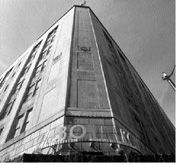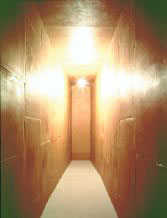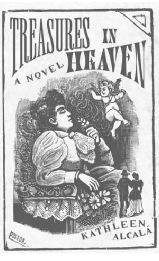Like Cinderella, the Bon March頨as transformed itself from dowdy drudge to comely queen after embarking on a year-long beauty regimen to rival that of the skinniest supermodel. Once upon a time, its lighting resembled the inside of a black hole, turning one’s face an unattractive shade of Dorian gray; its dressing tombs with their fun house mirrors made trying on a bathing suit about as fun as being trapped in a submarine; its merchandise was squashed into sparse square footage like Pamela Lee into an A-cup Wonder Bra. Now Cindy’s sipping champagne from a high-heeled glass slipper—and from a mule, a clog, and a black calf-length, square-toed, stacked-heel Unisa Ipanema boot (just in for fall).
Of all the changes the Bon has made—relocating the men’s department to the lower level, installing mod self-access cosmetics counters, decreasing clutter, increasing wattage—none compares to the extensive remodel of its shoe department. Taking up the entire back wall of the first floor and then some, the department has swollen to four times its former size, as if it had suddenly become a hot tech stock. Which, in a way, it has: Designers have begun to realize that while there are only three women who can actually a) afford and b) fit into an Armani suit, virtually everyone can find a pair of shoes they like. From comfy Keds to sexy (and crippling) Manolo Blahnik slingbacks, the explosion of footware fancy in the past few years has made Imeldas of us all.
Ah, irony. Since the Bon reinvented itself, it’s not just looking more like Nordie’s than ever, it has become the stereotypical pupil outshining the teacher. Says Bon shoe god Angel Revilla, “We’re the number one shoe store, with the biggest and widest selection in Seattle.” And he should know, having previously worked at that other shoe store. (Interestingly enough, the Bon opened before Nordstrom, and, had founder Josephine Nordhoff not christened it with its present silly name—which translates roughly as “good bargain” and which many non-natives insist on pronouncing “Bon Marsh”—it could have been called “Nordhoff’s,” making it the original Nordie’s and engendering much amusing confusion.) Revilla cites better deals, more sales and brands, faster turnover, and over 1,000 styles as factors in the Bon’s success, noting he gets a lot more business than he used to. Cha-ching.
Indeed, on a recent visit, the combination of fall preview and end-of-summer sales made the place look like a seventh-grade social studies class saddled with a substitute teacher. Shoes, socks, and packages were strewn willy-nilly on the floor like trash in a New York subway. Size-six sandals camouflaged on size-10 sales racks lay waiting for unsuspecting customers. Tan summer feet fought the clutch of leather. Rationales and justifications—”but the five pairs of brown shoes I already own don’t really go with these pants”—were chanted like mantras. Black boots were everywhere, singing their siren call: “You are nothing, no, you are less than nothing this fall, you are a mere flea on a tiger’s back if you do not buy me right now.” Every shoe brandished severe square toes whose crisp Mondrian line was seemingly drawn with a T-square. In the frenzy, salespeople sporting Madonna-like headsets ran back and forth from customer to register to gargantuan, multilevel stockroom placating, commiserating, cajoling, and flattering.
A few blocks away, a more subdued scene unfolded. Jaded fashionistas studied feathered mules as if they were philosophical treatises. Red faux crocodile boots uncoiled from their boxes with only the slightest rustle of tissue paper. Sales associates strolled across the tidy-as-a-convent room with a blas頡ir, telephoning for stock in hushed tones. The term “paw through the merchandise” did not apply, even remotely, to the well-behaved crowd. Even the sneakers looked bored in their corner. Where was the energy, the excitement—where were the Easy Spirits?
If, as Linda O’Keefe says in her bite-size coffee-table book Shoes, “Shoes are a force for change, a means of shedding the past and buying into the future,” then the Seattle shoe scene has much to augur. Will the Bon become the new vivant in town, its cheerful hubbub usurping Nordstrom’s sleek boutique mystique? What shoe will best personify Seattle five or 10 years from now—Blahnik or Birkenstock? And, most importantly, will my new black, square-toed, stack-heeled Captain Kirk boots still be in style next year? Stay tuned, folks.








